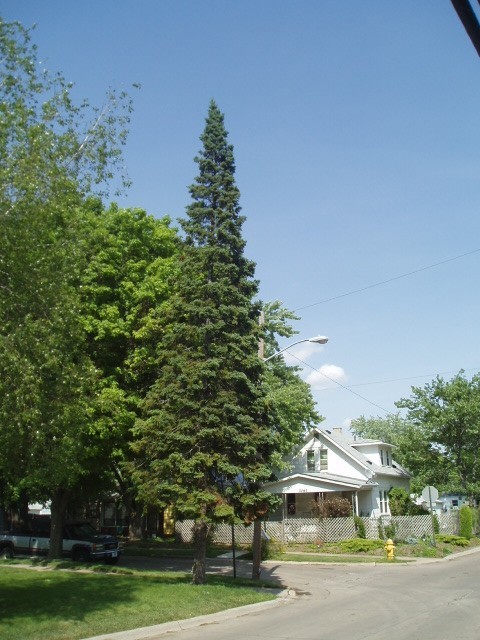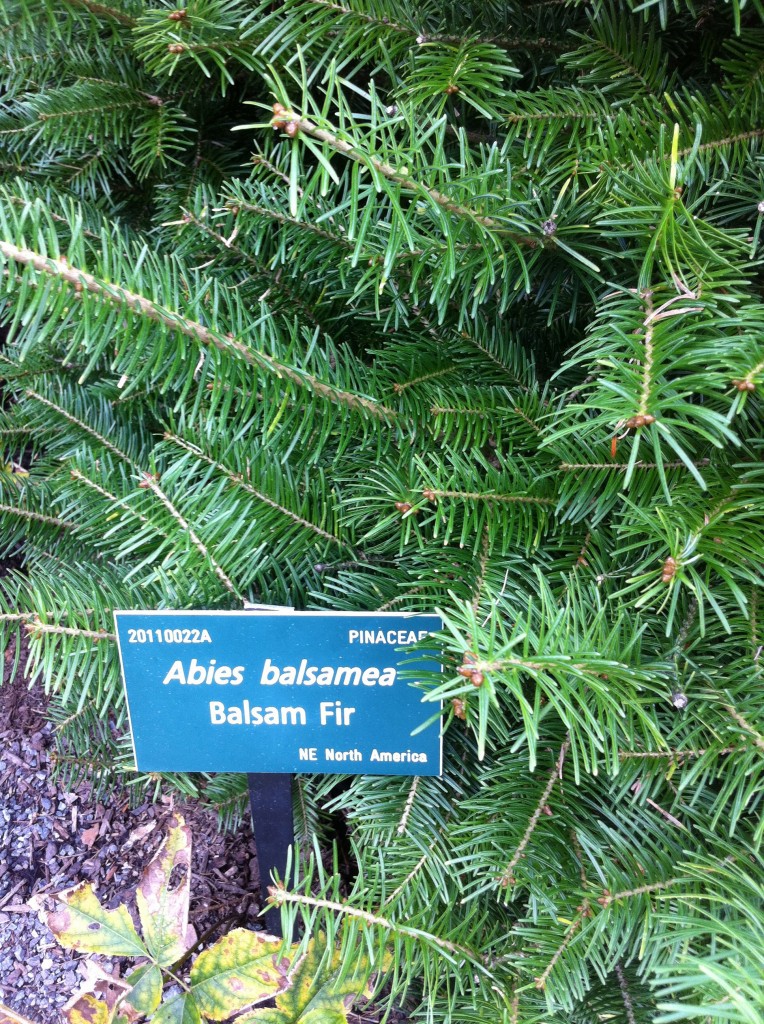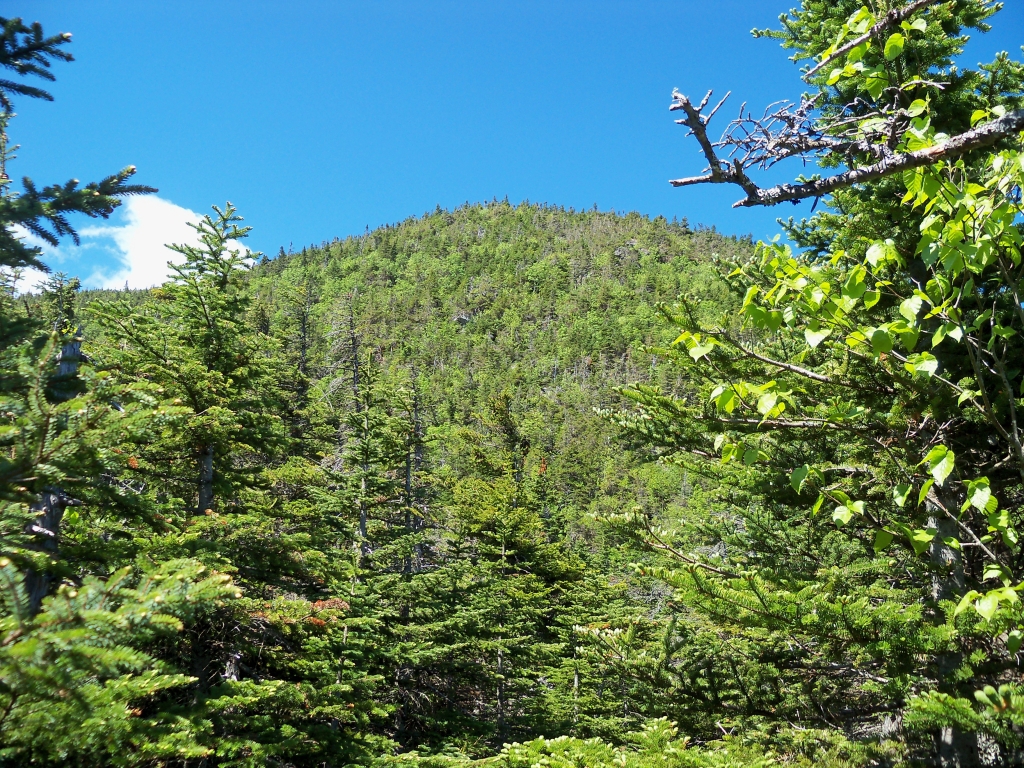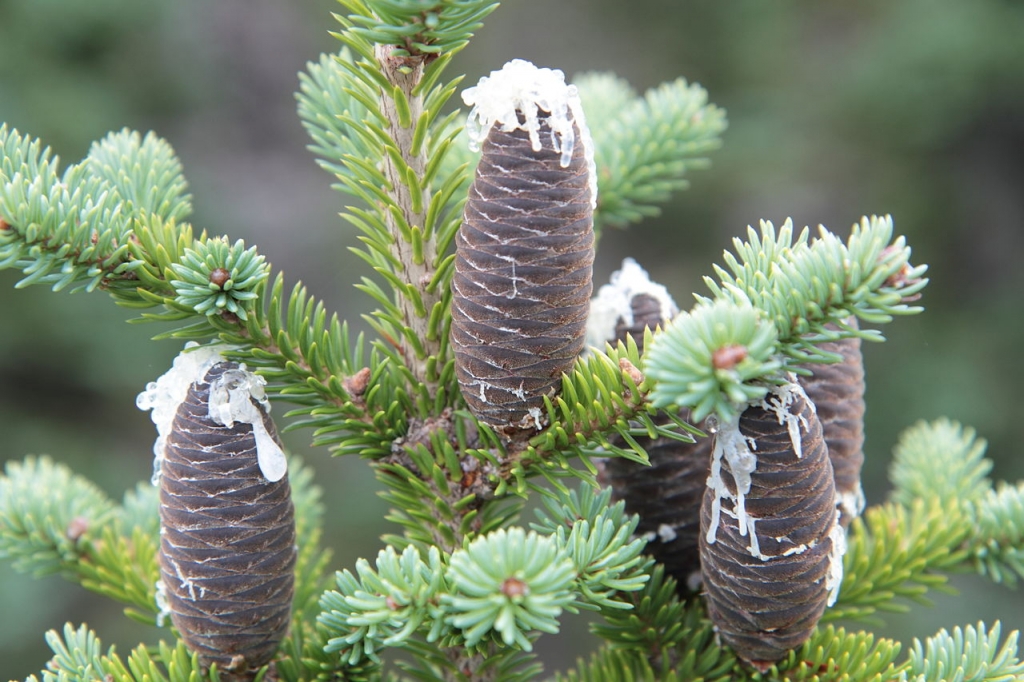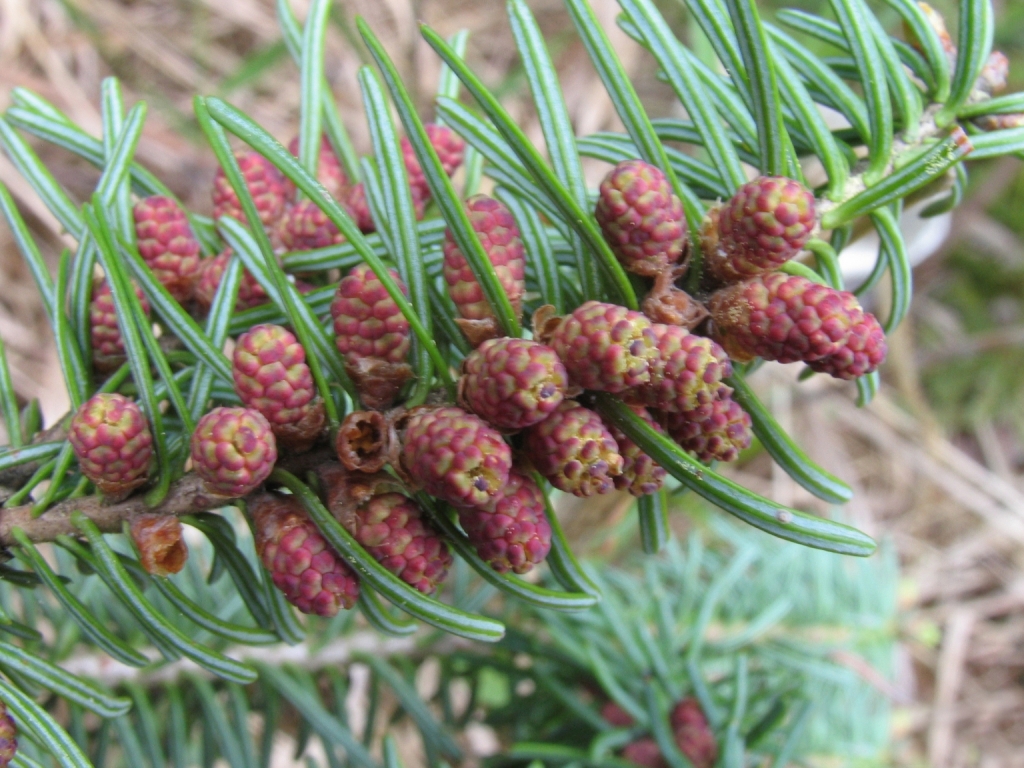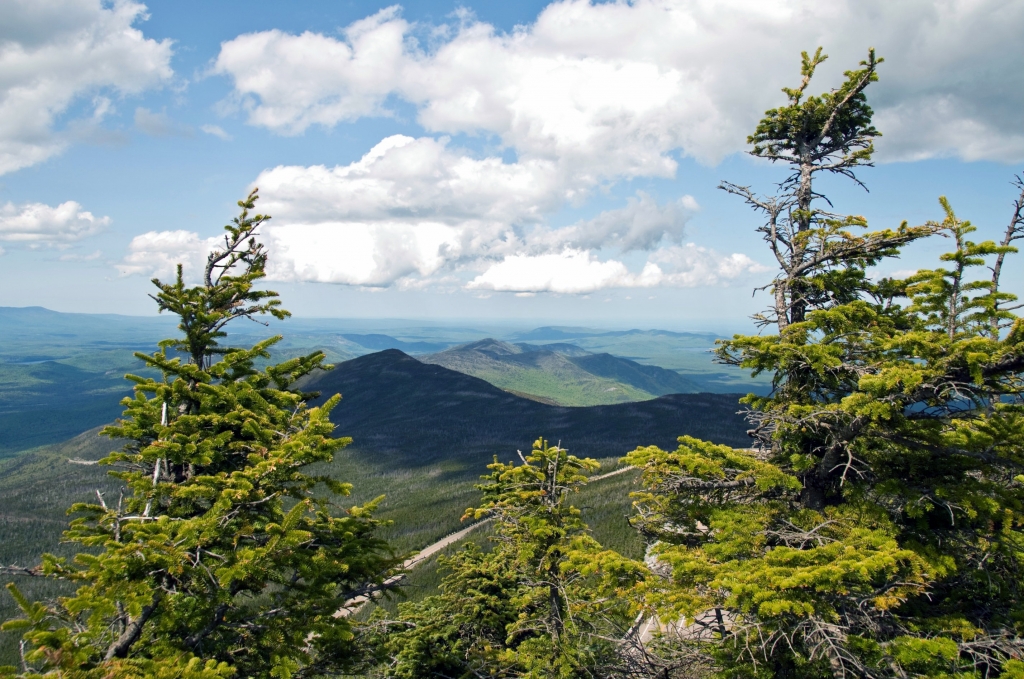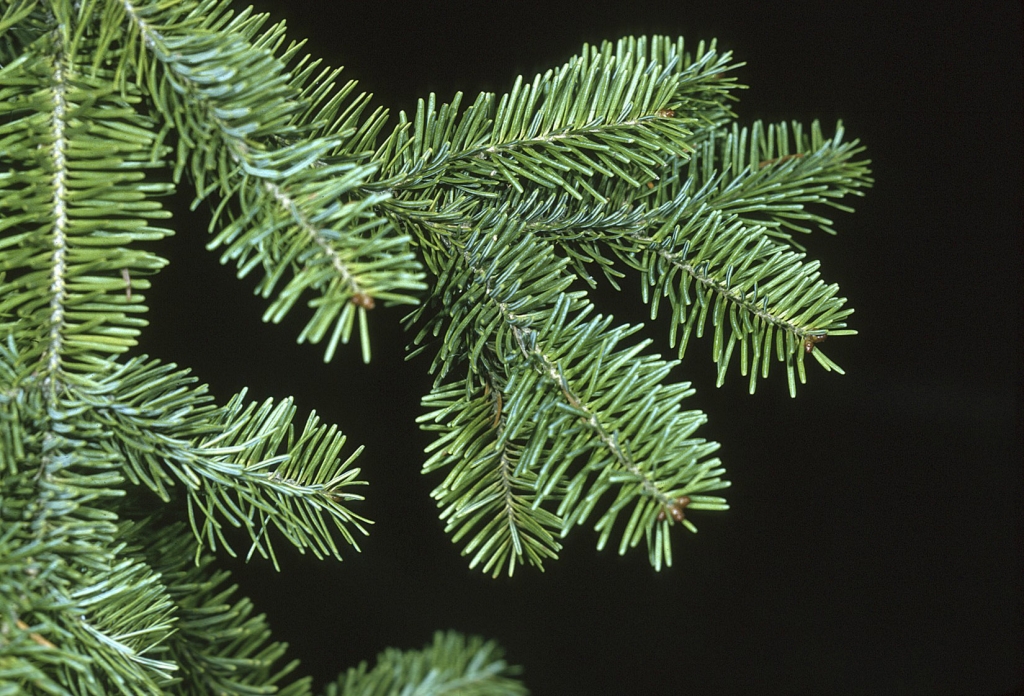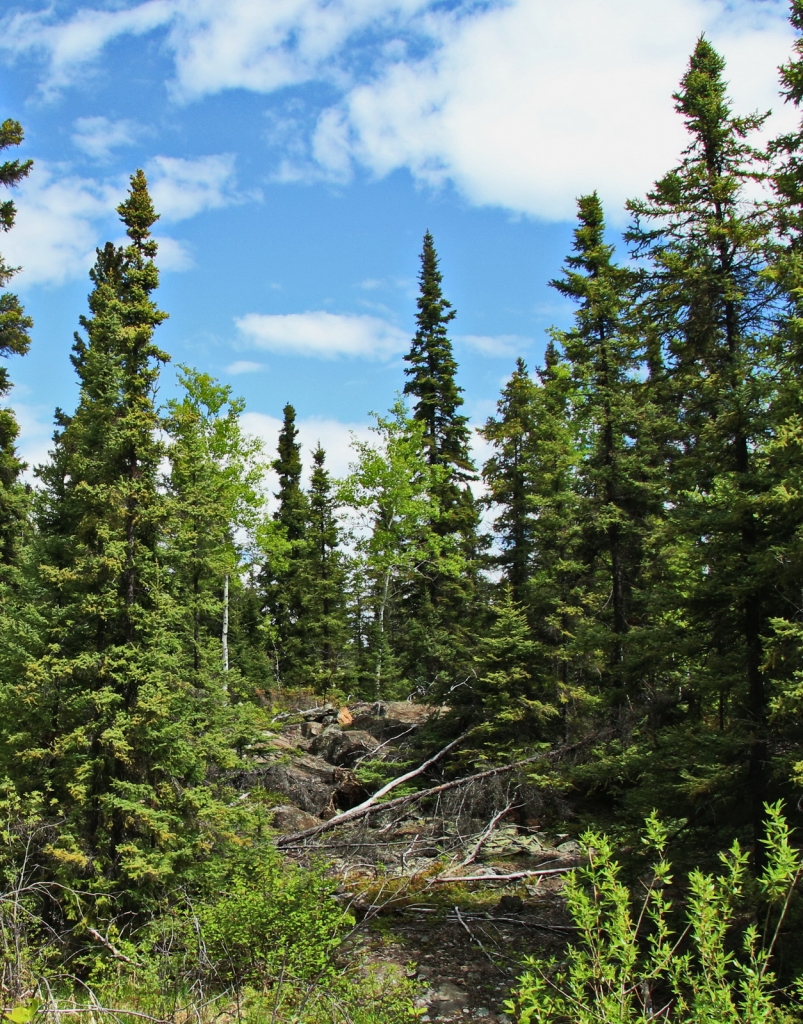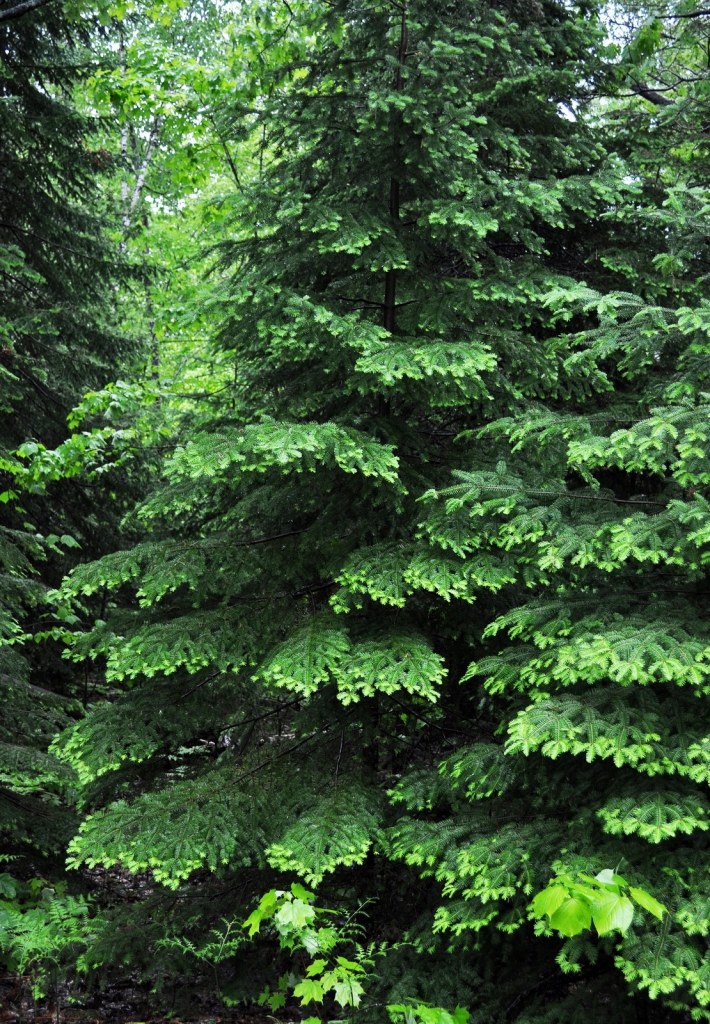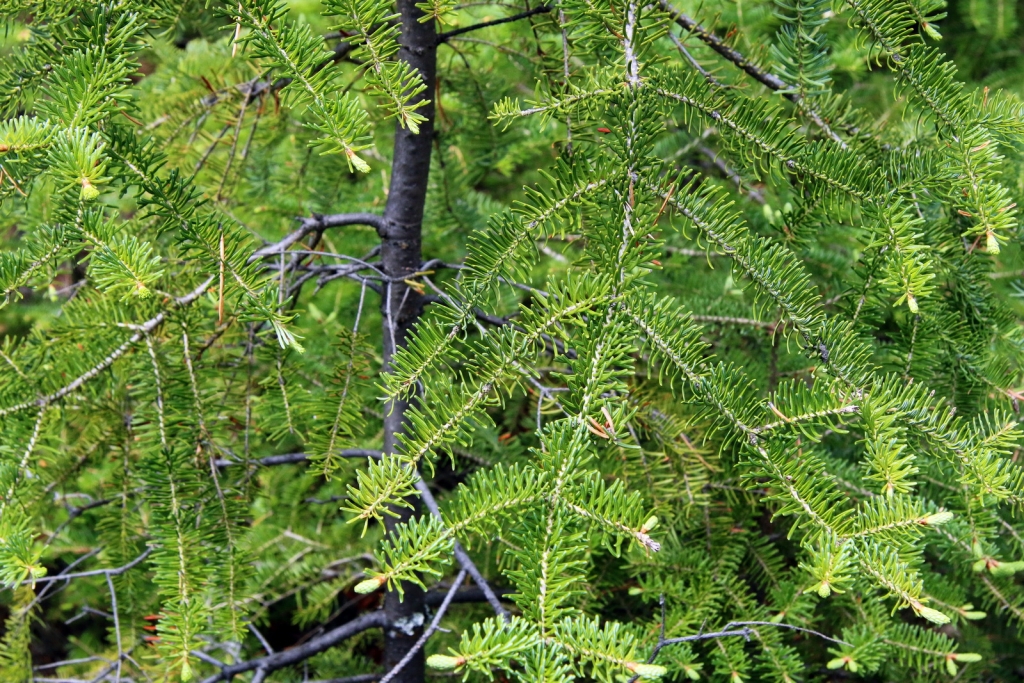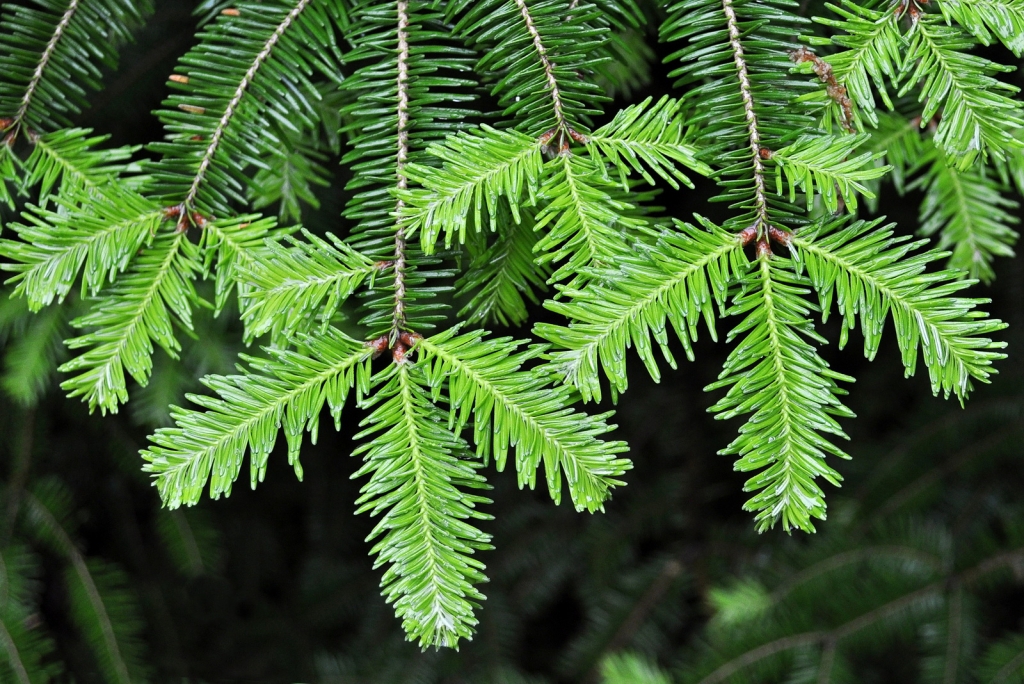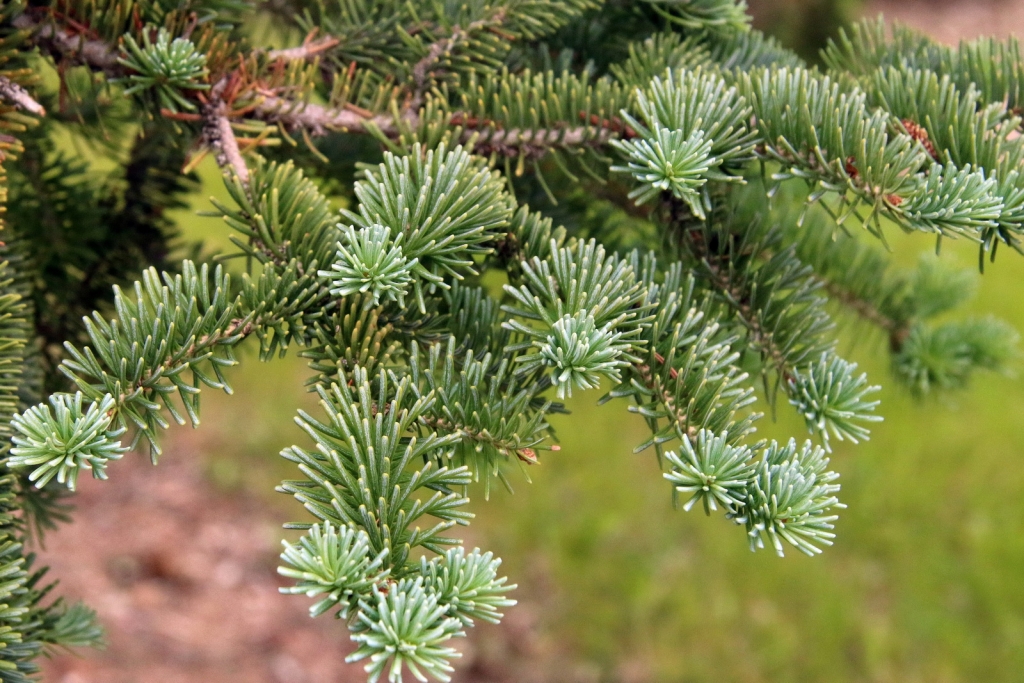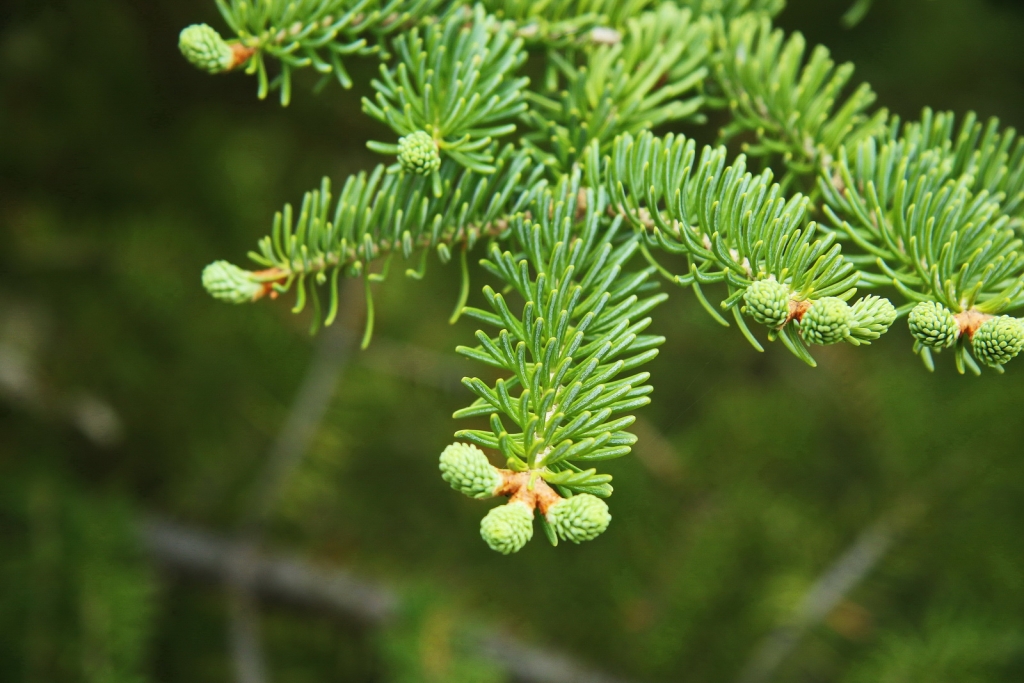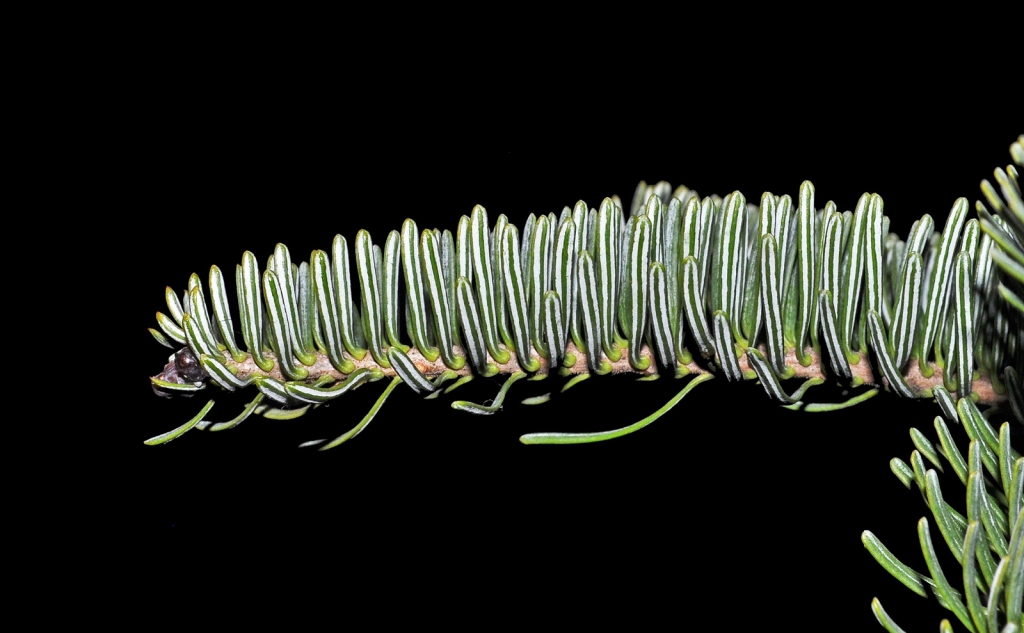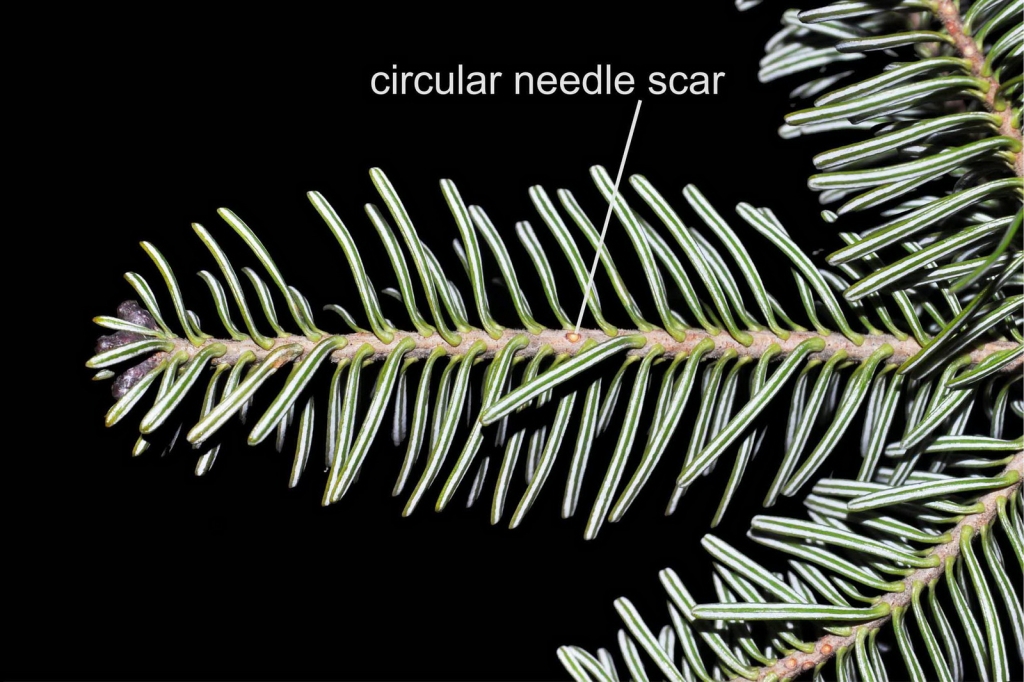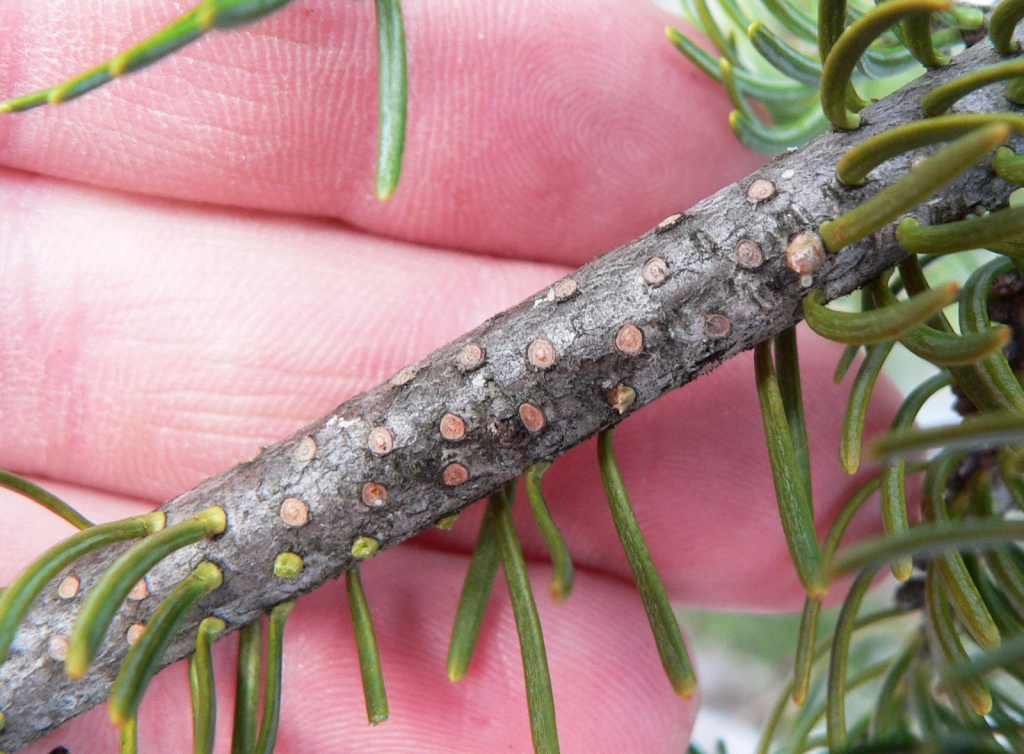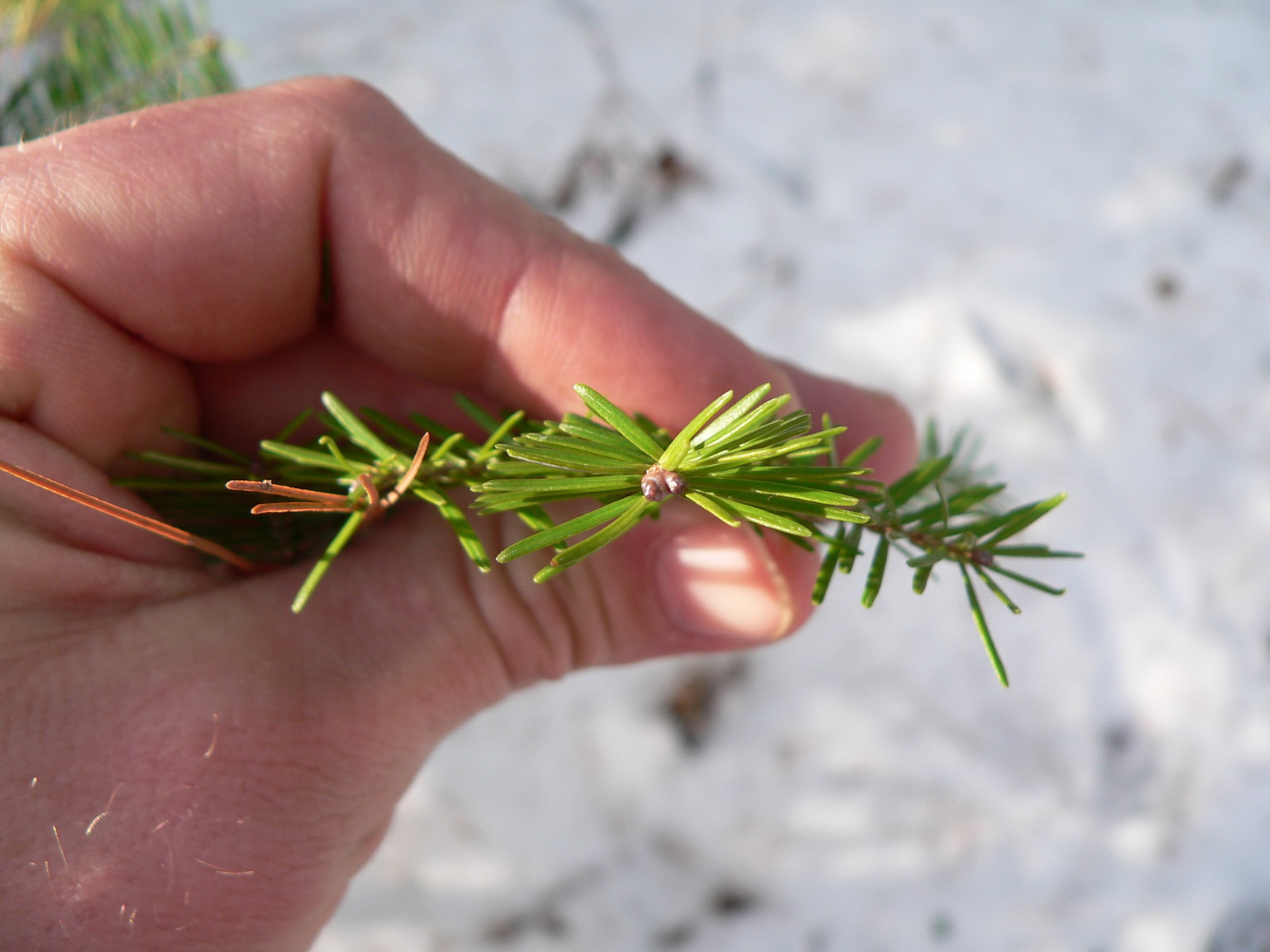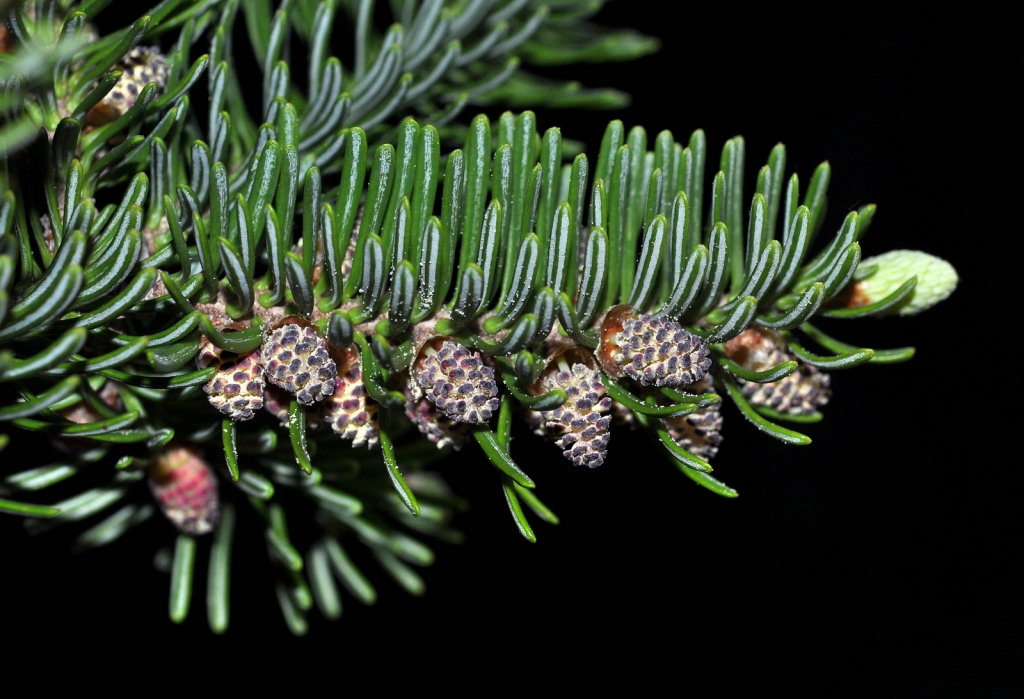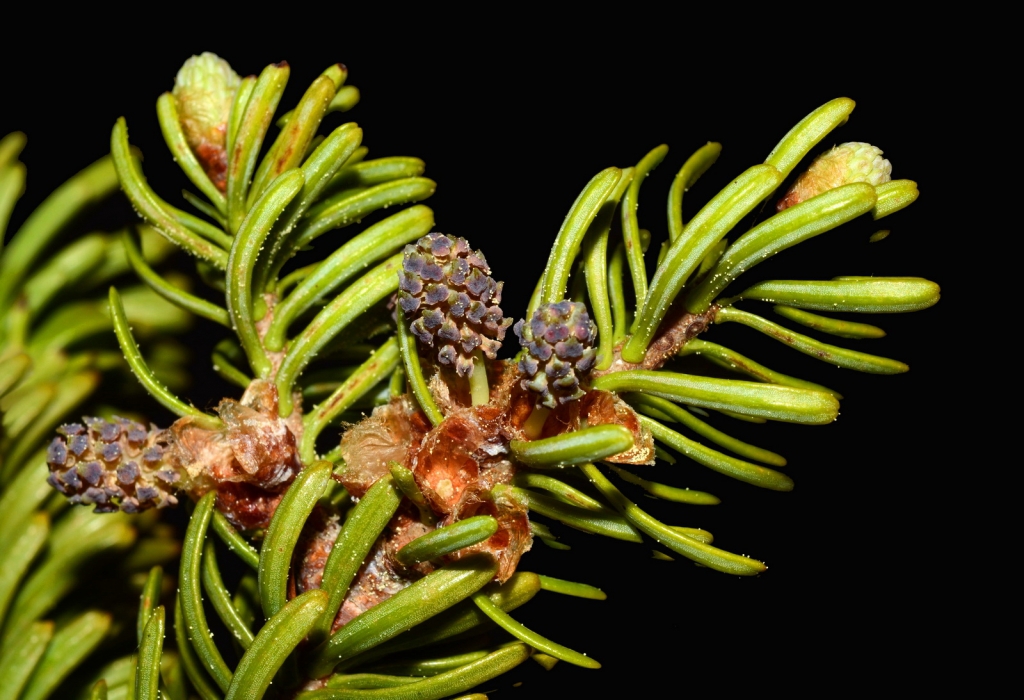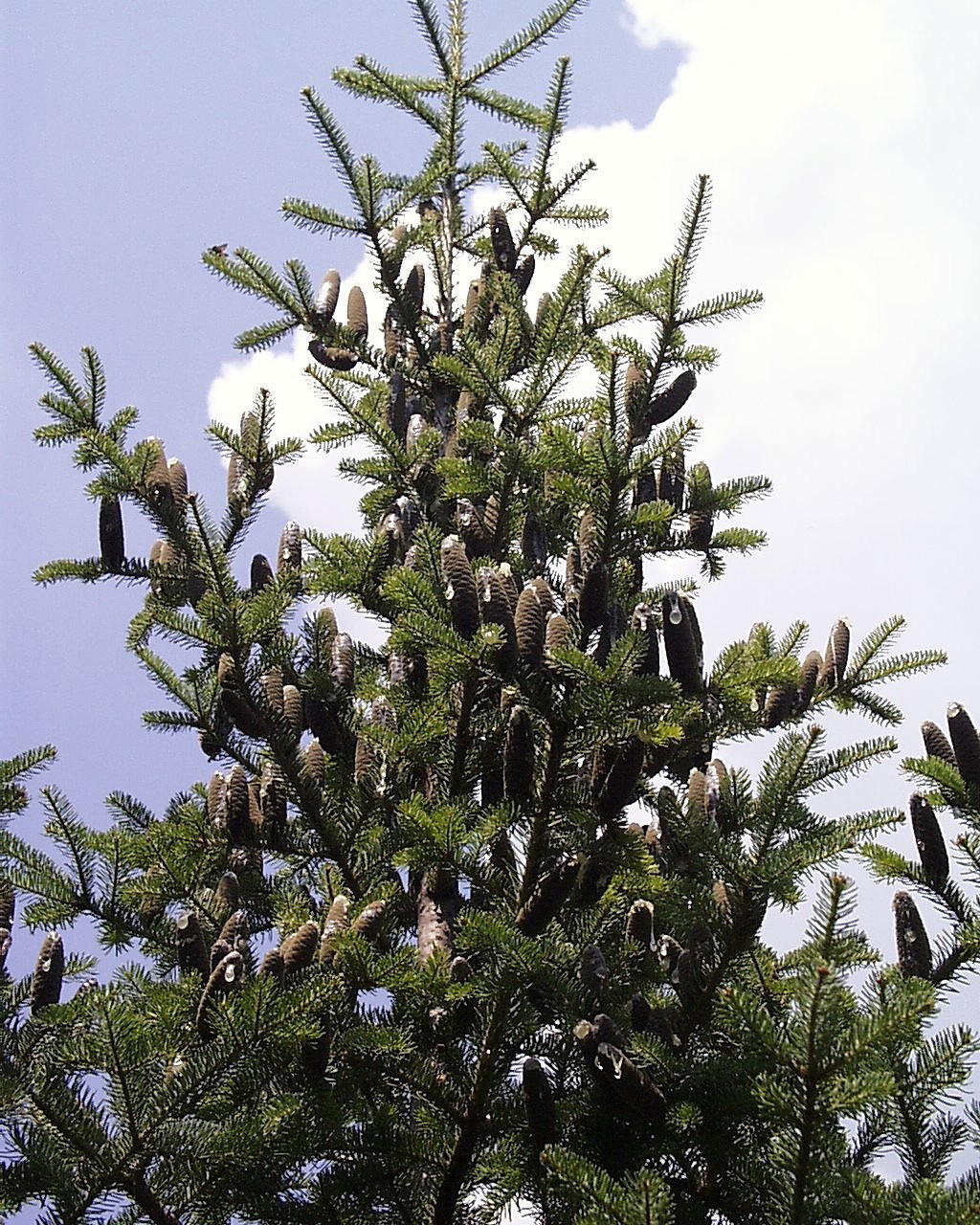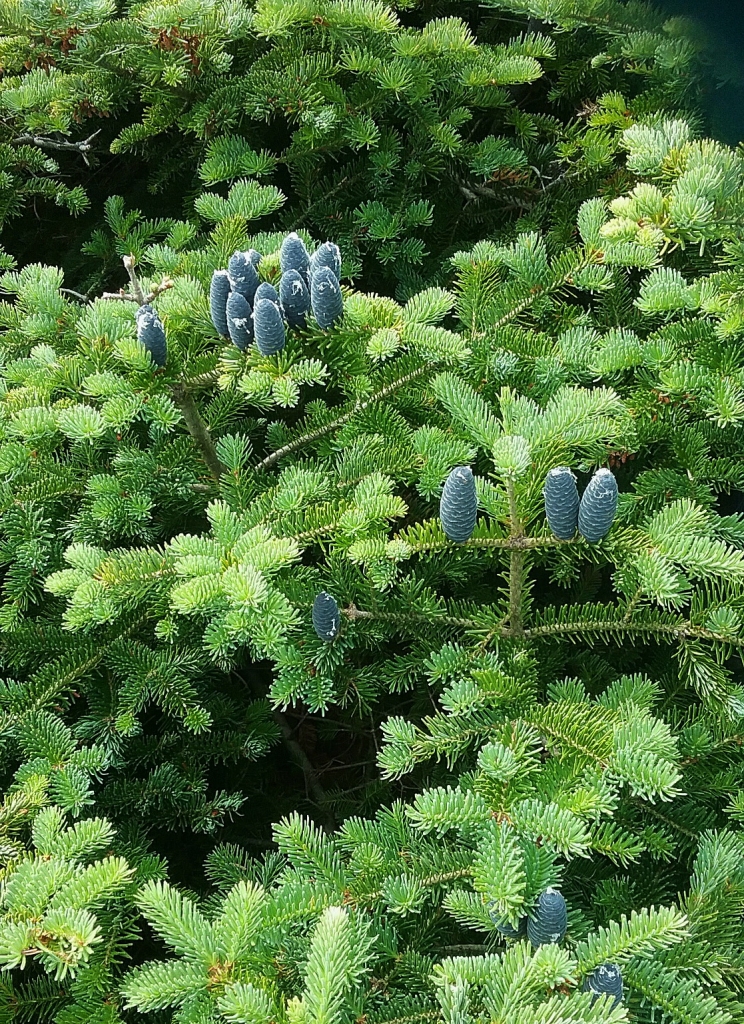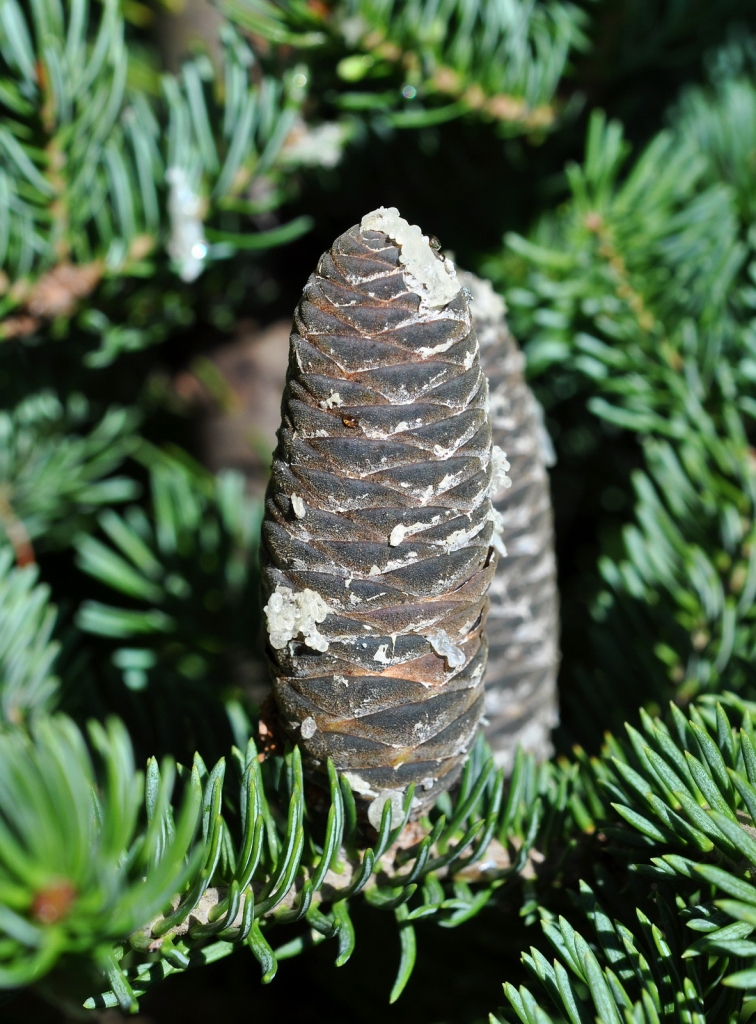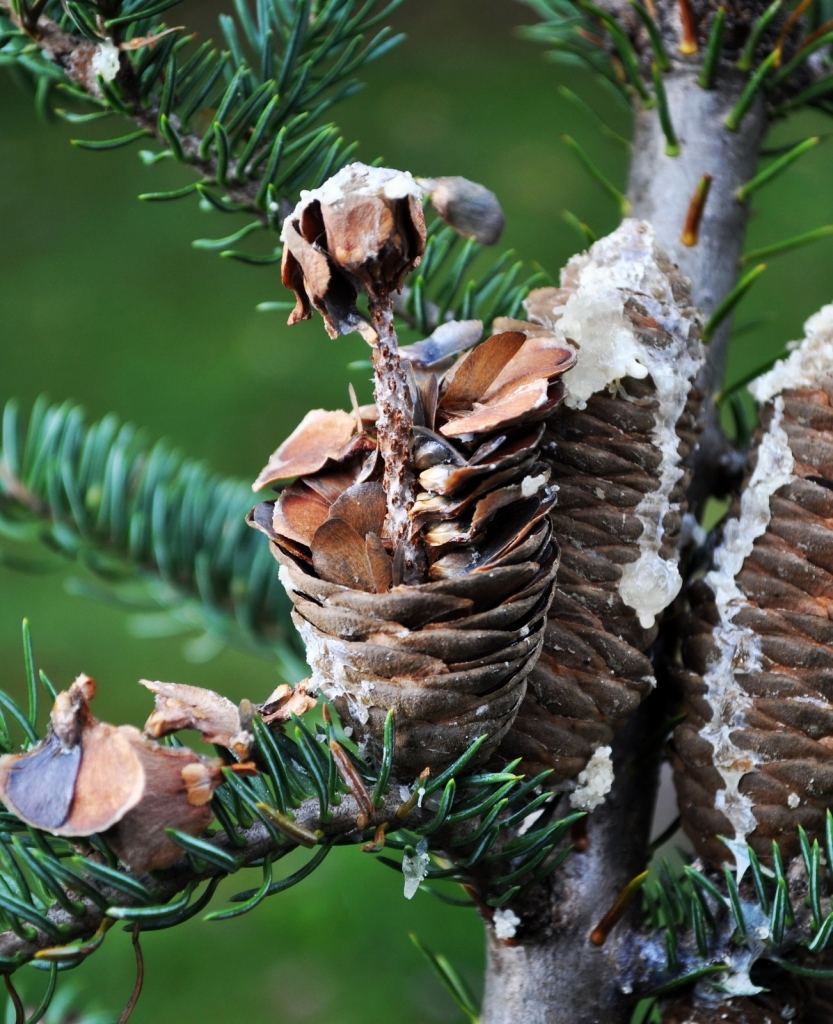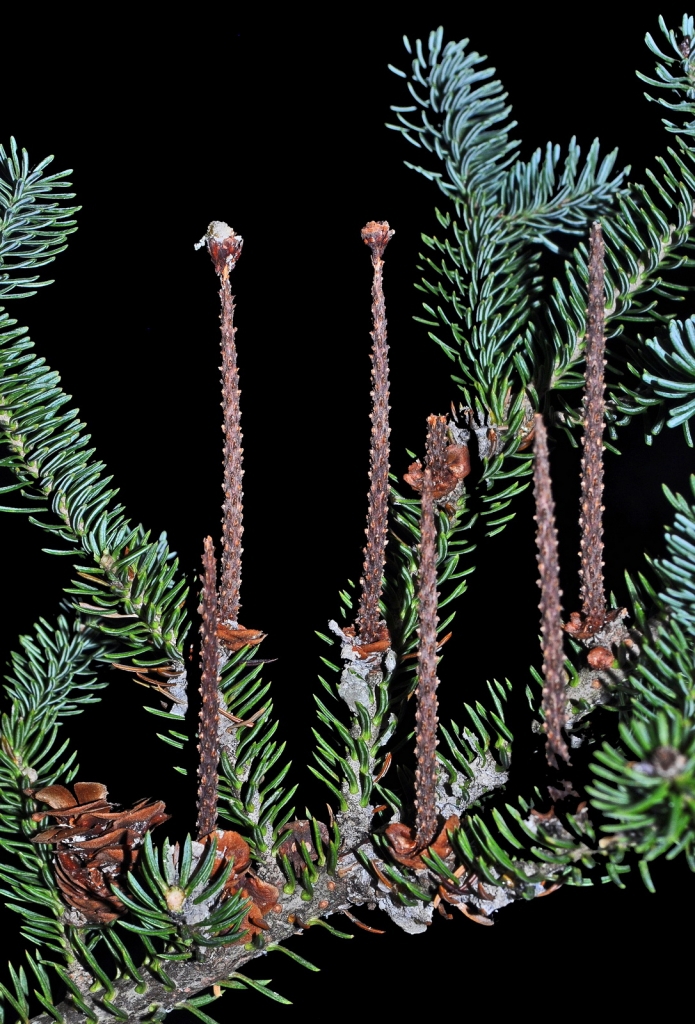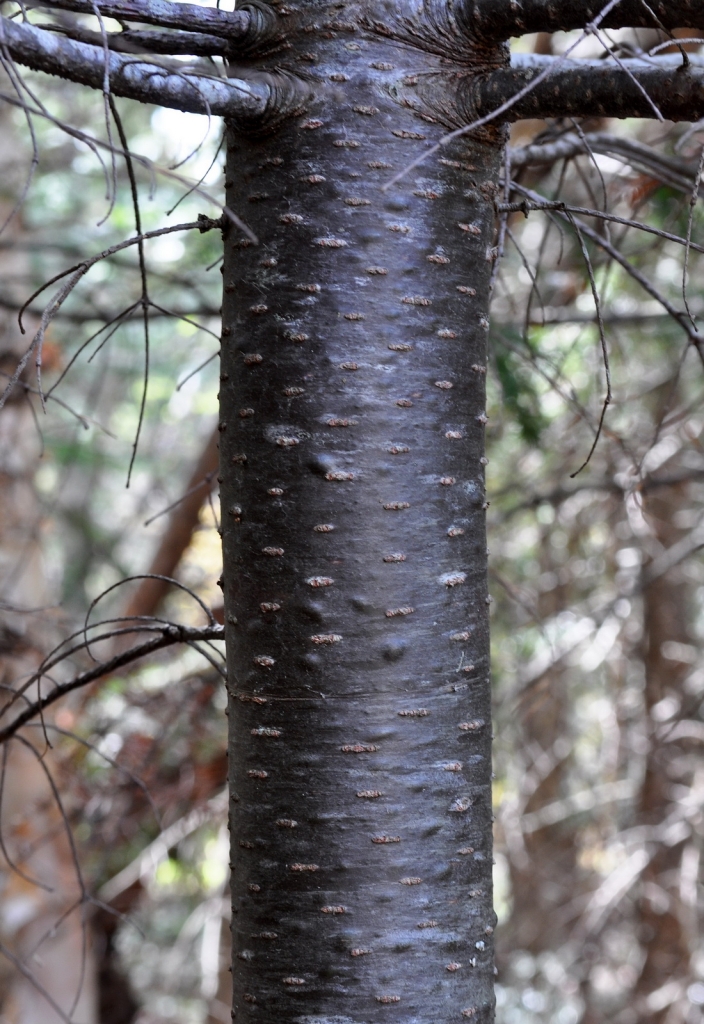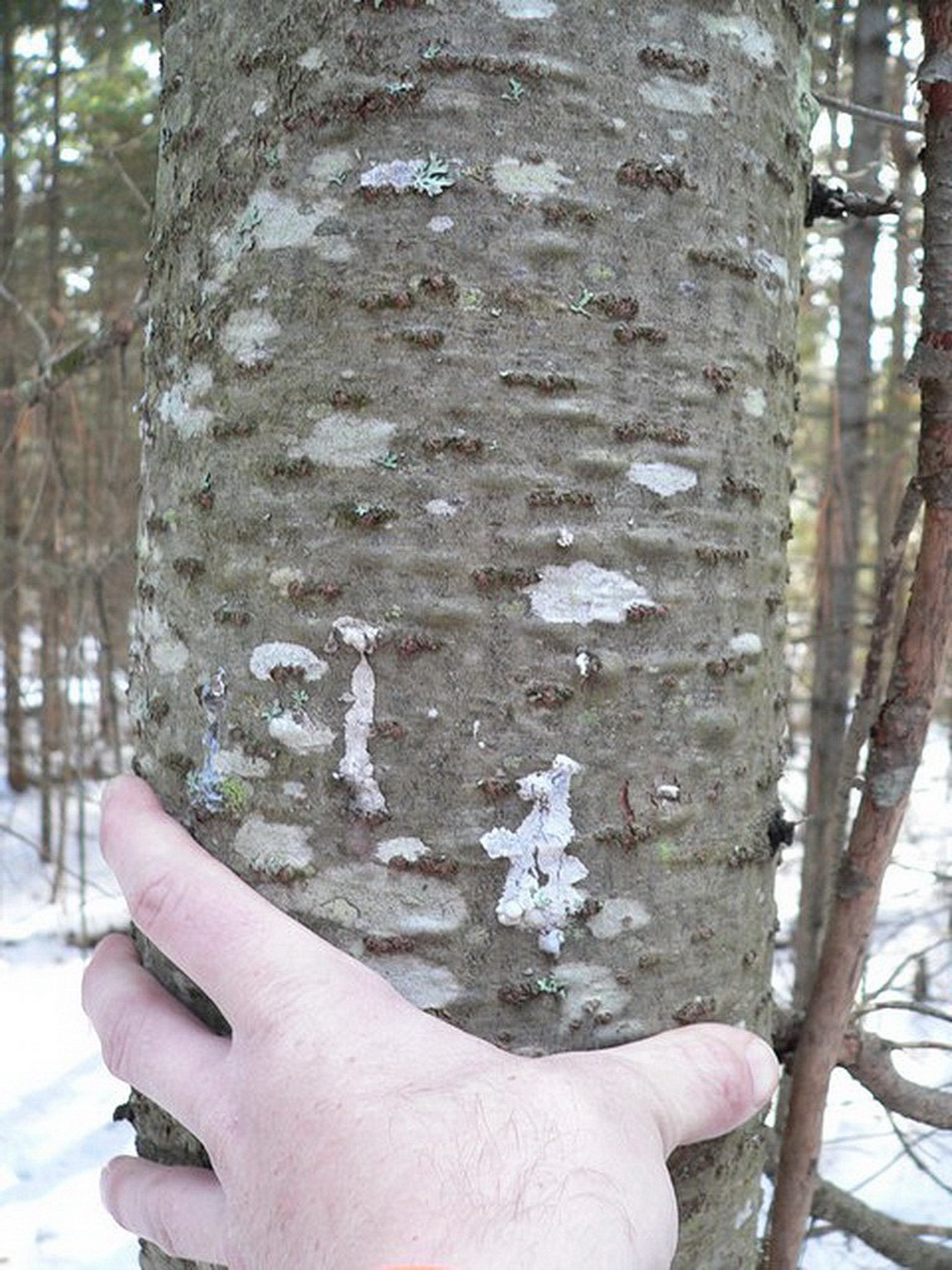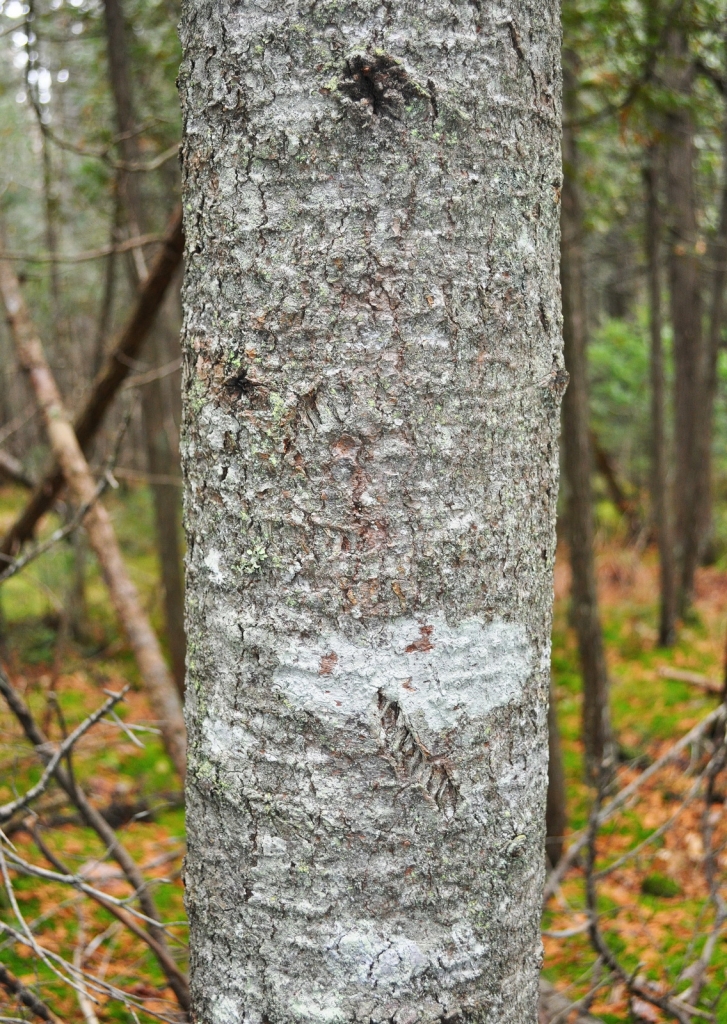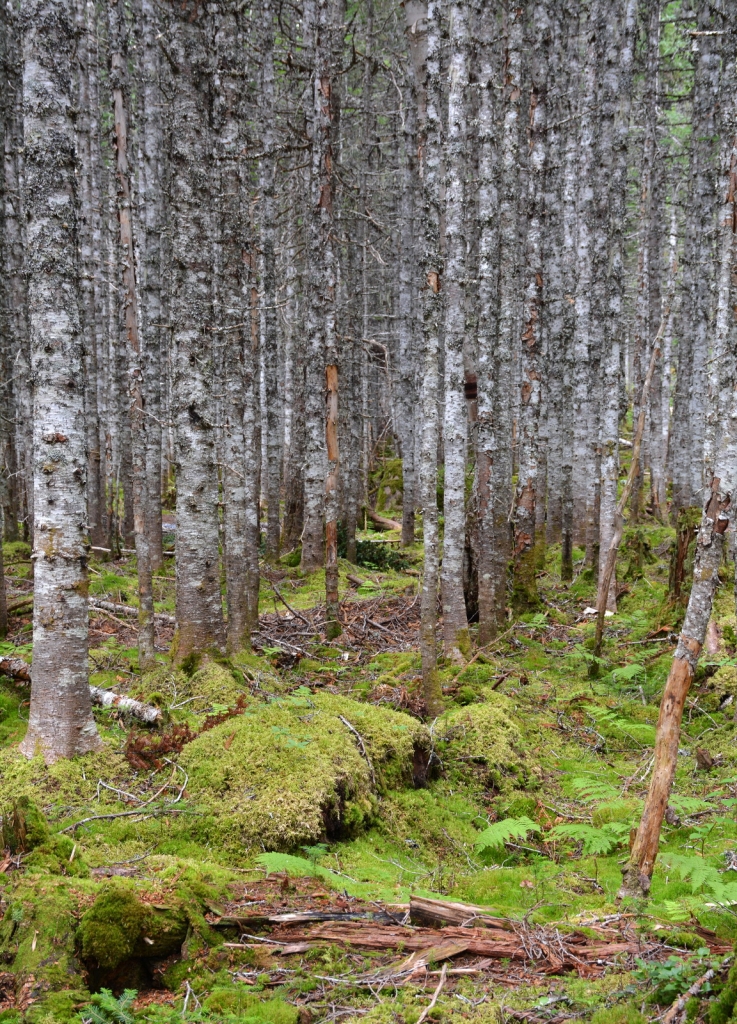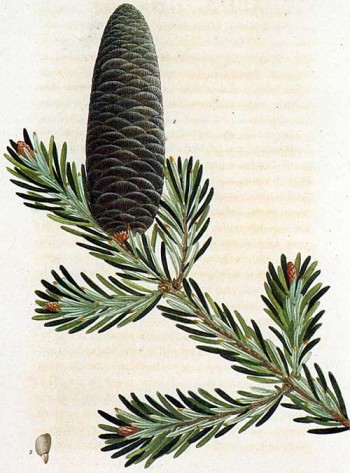
Abies balsamea, as described in 1768 by (Linnaeus) Philip Miller (1691-1771), in The Gardeners Dictionary, 8th edition, no. 3 is commonly known as Balsam fir, Blister- or Balm-of-Gilead fir; Eastern fir or Canada balsam; as well as sapin baumler in the French language. The species and common names refer to the fragrant resin (Canadian balsam) that is obtained in essentially pure form from the bark's resin pockets.
There are two varieties:
Ethnobotany. Both varieties of the species are very popular as Christmas trees, particularly in the northeastern United States. The resin is used to produce Canada balsam, and was traditionally used as a cold remedy and as a glue for glasses, optical instrument components, and for preparing permanent mounts of microscope specimens. The wood is milled for framing lumber, siding and pulped for paper manufacture. Balsam fir oil is an EPA approved nontoxic rodent repellent. The balsam fir is also used as an air freshener and as incense.
Prior to the availability of foam rubber and air mattresses; balsam fir boughs were a preferred mattress in places where trees greatly outnumbered campers. Many fir limbs are vertically bowed from alternating periods of downward deformation from snow loading and new growth reaching upward for sunlight. Layers of inverted, freshly cut limbs from small trees created a pleasantly fragrant mattress lifting bedding off the wet ground; and the bowed green limbs were springs beneath the soft needles. Upper layers of limbs were placed with the cut ends of the limbs touching the earth to avoid uncomfortably sharp spots and sap. The Native Americans used it for a variety of medicinal purposes.
Description. Balsam fir is a small to medium-sized evergreen coniferous tree which grows to a mature heights of 45 to 65 feet (14 - 20 m) tall, rarely to 90 feet (27 m) tall, with a narrow conic crown.
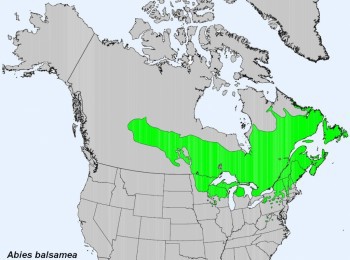
Distribution. This species is native to Canada - the provinces of Alberta, Saskatchewan; Manitoba, Ontario, Québec, Prince Edward Island, New Brunswick, Nova Scotia, and Newfoundland.
In the USA it is native throughout the states of Minnesota, Michigan, Wisconsin, Iowa, West Virginia, Virginia, Pennsylvania, New York, Connecticut, Massachusetts, Vermont, New Hampshire, and Maine at sea level to 5,500 feet (0 - 1,700 m) of elevation in boreal and north temperate forests.
Hardy to USDA Zone 3 - cold hardiness limit between -40° and -30°F (-39.9° and -34.4°C).
On mountain tops, stands of balsam fir occasionally develop fir waves. Often found in association with black spruce (Picea mariana), white spruce (Picea glauca) and trembling aspen (Populus tremuloides).
This tree provides food for moose, American red squirrels, crossbills and chickadees, as well as shelter for moose, snowshoe hares, white-tailed deer, ruffed grouse and other small mammals and songbirds. The needles are eaten by some lepidopteran caterpillars, for example the Io moth (Automeris io).
